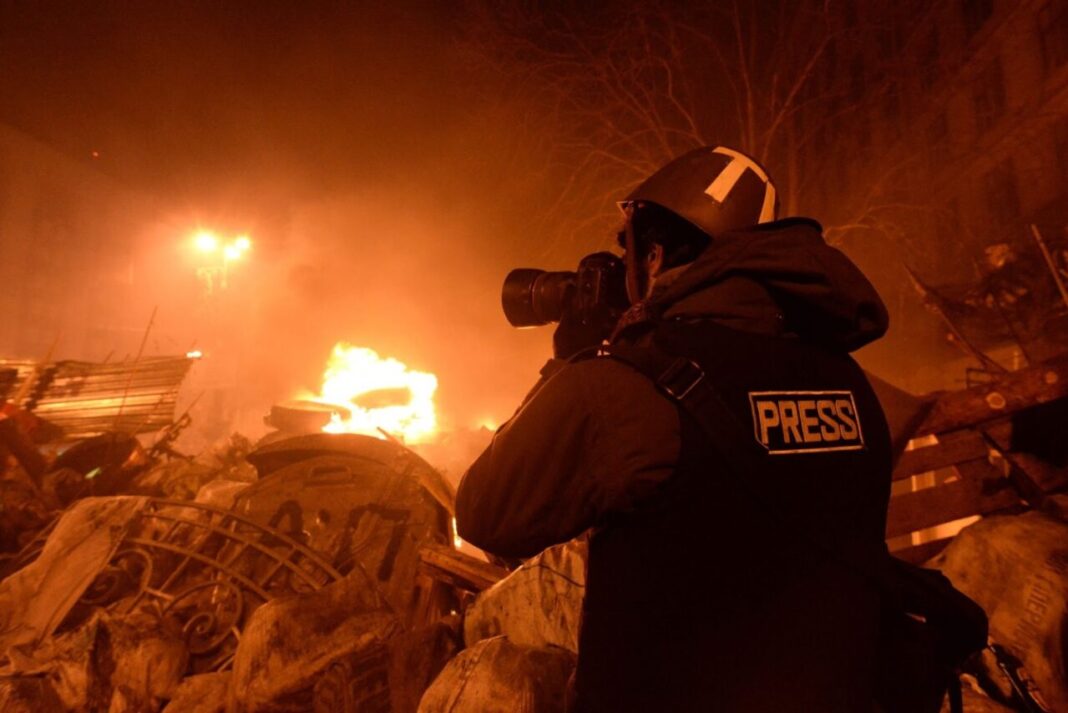The media, the hidden ruler of our lives and perceptions, takes us this time from the dark pandemic rooms of 2020 to the brutal war of 2022. But, what’s going on in the world apart from these two?
In a world of increasing atrocities, the way the media brings these issues to light prompts societies to become aware of and think about “hot topics” in the midst of their daily lives. Yet, while the burden rests on the media, they draw attention from one topic to another, and then after a while, they move on to a new drama that would lure more interest from the masses. That is to say, the media is in the driver’s seat while we readers are driving along to the locations of topics in the passenger’s seat.
We have seen this pattern constantly with examples such as the Taliban crisis, the persecution of the Uyghurs in Xinjiang, Somalia’s long-lasting humanitarian crisis and growing violence in Myanmar, something that seemed to fall into oblivion. Today, we are witnessing the clash of two main topics of attention, such as the Covid-19 and Putin’s invasion of Ukraine, on which the media have a very different approaches.
It is an undeniable fact that the media plays a crucial role in the world order and therefore in people’s lives. Through the media, we have access to unattainable information about an important event from anywhere in the world. This allows societies to shape their opinions on issues ranging from politics to the economy. Nevertheless, when it comes to the level of “diversity” and “credibility” of information, our utmost concern is still on the table.
When the United States withdrew from Afghanistan on August 15, 2021, it paved the way for the resurrection of the Taliban in the country and the imminent fall of Kabul. The rise of this Islamist militant organization, which caused a new refugee crisis and massive violations of human and women’s rights, left its mark on the world order. But then what happened? Under the influential cloak of the media, it was buried day by day in darkness. Instead of forcing world leaders to take concrete action against the Taliban, they led the world to accept their presence in Afghanistan. Moreover, not only has the media failed to adequately bring the humanitarian crises and violence against civilians in Myanmar, Yemen, Ethiopia and many more to the world stage, but has also given most people the illusion that life has returned to normal in these regions and that the issue there is ended.
The critical balance between manipulation and dissemination of information
The average population seems overfed with negative news in the last decades of the 21st century. In the face of this, we see the results of how the latest events are presented in the media today, trying to shock us as hard as possible to get our attention. The dangerous part of this practice is how easy it is to fall into the dissemination of false information and fake news. This creates a major conflict in the search for truth in places like the internet, where there is always debate about how the different media channels get their sources of information and whether they are trustworthy.
As we live today in a globalised and digital world, any information can be collected with a simple click on a post. And yet, it is still up to the media to enlighten society by disseminating information or to overshadow it by manipulating the facts. According to the research of the World Health Organization, nearly 6 000 people worldwide were hospitalized in the first 3 months of 2020 due to misinformation. Moreover, with media attention drawn to Putin’s attacks in Ukraine, the pandemic was “cancelled” 2 years later, and this time the media shed light on the critical geopolitical effects of the war and what it means in the international relations and world order.
On February 24, 2022, as Russia waged a full-scale war in Ukraine, social media and the internet deceived the masses around the world with fake/false videos and images. A few hours after the Russian invasion, a video of the explosion, viewed by more than 112,000 people, became a big hit on Twitter. But when the truth came out, it became clear that it was an incident that occurred in August 2015 at a storage facility in Tianjin, China. Thus, the media, which has almost decisive power over people’s lives, creates unanticipated results in life-and-death situations, both during the pandemic and during the war.
Discover all the Eastwest European Institute’s courses.
In a world of increasing atrocities, the way the media brings these issues to light prompts societies to become aware of and think about “hot topics” in the midst of their daily lives. Yet, while the burden rests on the media, they draw attention from one topic to another, and then after a while, they move on to a new drama that would lure more interest from the masses. That is to say, the media is in the driver’s seat while we readers are driving along to the locations of topics in the passenger’s seat.




